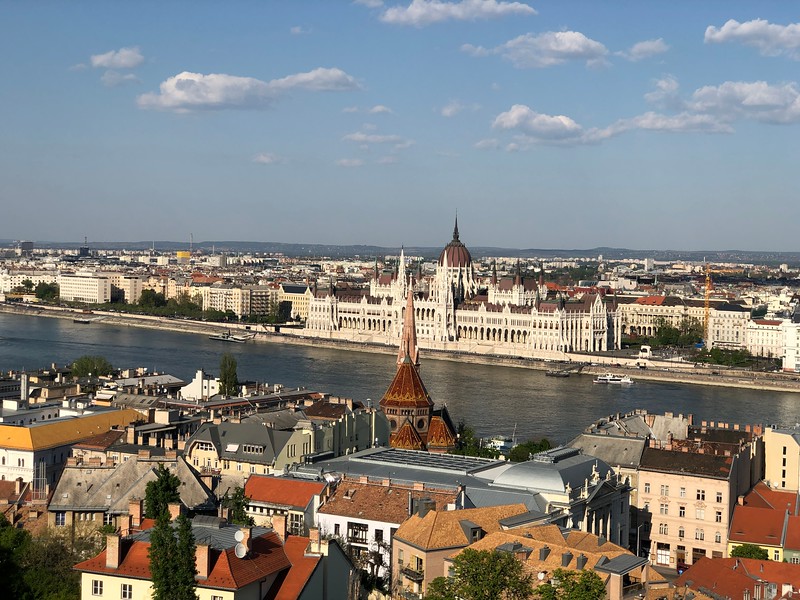We rolled into Budapest-Keleti somewhat late, after dark. Like Vienna, it was a city neither of us had ever been too, but unlike Vienna it loomed large in the history and lore of the Cold War. For David, this was the city swapped for Bucharest in the movie version of Tinker Tailor Solider Spy. For myself, it was far into Eastern Europe, deeply into Warsaw Pact territory. It was also a nation and a culture I knew very little about.
The Magyars, as the Hungarians call themselves, are an ethnic group distinct from the Slavs, the Rus, and the Turks. I got a bit of a crash course in Magyar history from a podcast I listened to about the revolutions of 1848, and that was mostly a setup to how it figured into the Austro-Hungarian Empire, specifically that Hungary for a very long time was a strong regional power in its own right. But, that was all I knew. Former imperial co-owner, later Soviet satellite state. Oh and centuries ago they were amazing horsemen and warriors, invading most of modern Hungary in the 800s AD.
We ended up walking to the Altrium Fashion Hotel, with all our luggage. It was farther than our previous walks, but it was a pleasant night and we were able to make a beeline to the hotel. “Fashion Hotel” seems to be a new category of inexpensive and renovated with modern, minimalist design. We liked our hotel, but the phrase was listed so often that it’s definitely a thing.
Day 1
Budapest was larger and more spread out, in terms of things to see, than either Prague or Vienna, so we knew we’d want transit cards. Having learned out lesson in Prague, we made sure to understand how validation worked – and then never got checked.
The Hungarians have definitely figured out tourism. On the one hand, the city still looked a little worn compared to Vienna, which was like Disneyland in the tourism district. On the other hand, they had bus companies, they had various kinds of multi-sight passes, they just had everything figured out to help tourists get around. It was surprisingly easy and pleasant.
On the first day, we walked around and got oriented. We were near the Jewish Quarter, and paid a very nominal fee to walk into the Kazincy Street Synagogue. It’s not as grand as the Great Synagogue nearby, but 1) it was open and 2) it was quite beautifully and colorfully painted inside, quite a difference from the brooding capaciousness of the various cathedrals and castles we saw. It was also a working synagogue, though the membership has dwindled to a few dozen regulars.
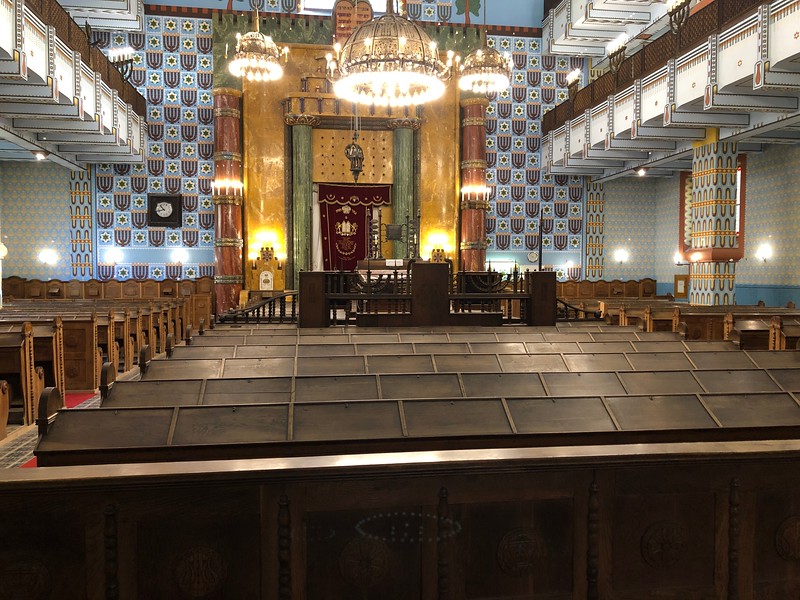
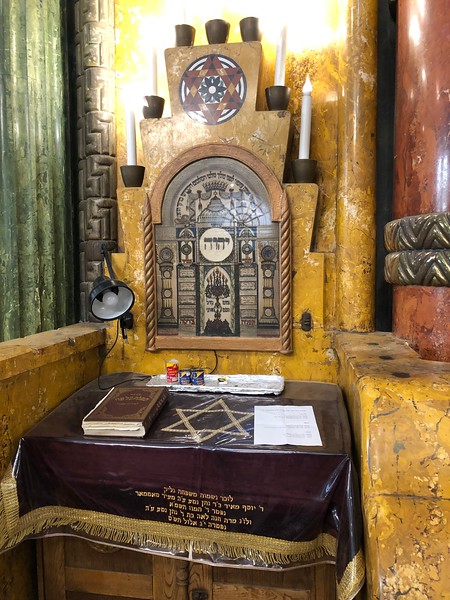
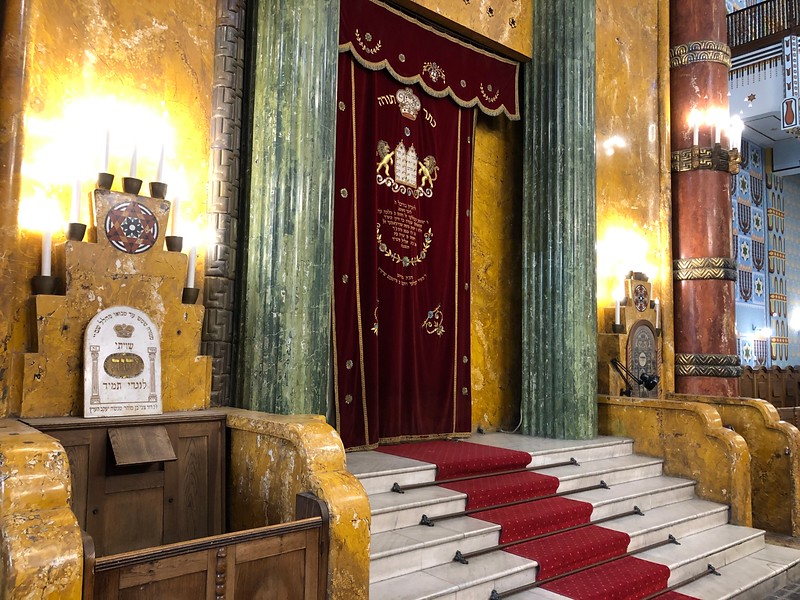
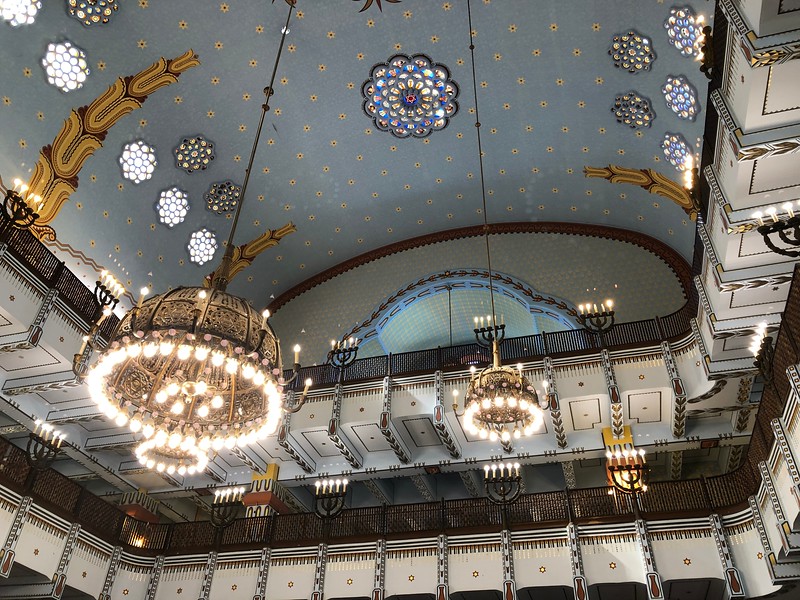
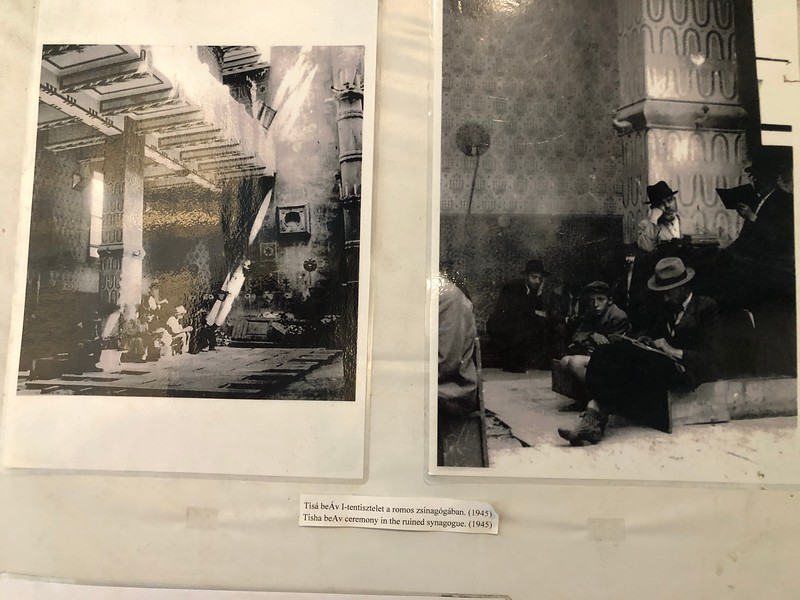
After that, we went to the Dom (cathedral) St. Stephen. The cathedral itself is quite young, built mostly in the 19th century and only recently fully consecrated, but once again, unlike older houses of worship we’d been to, it was more colorful and decorated.
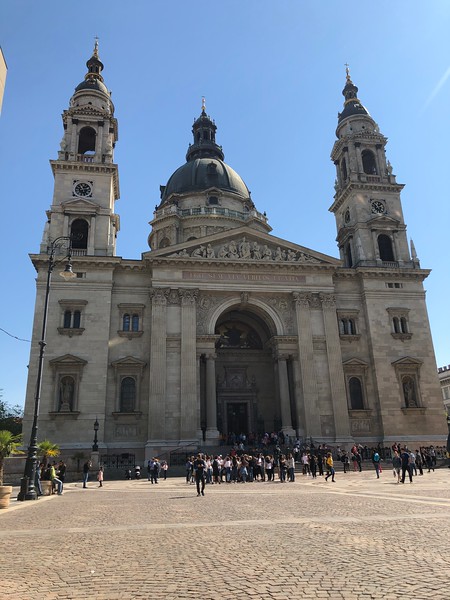
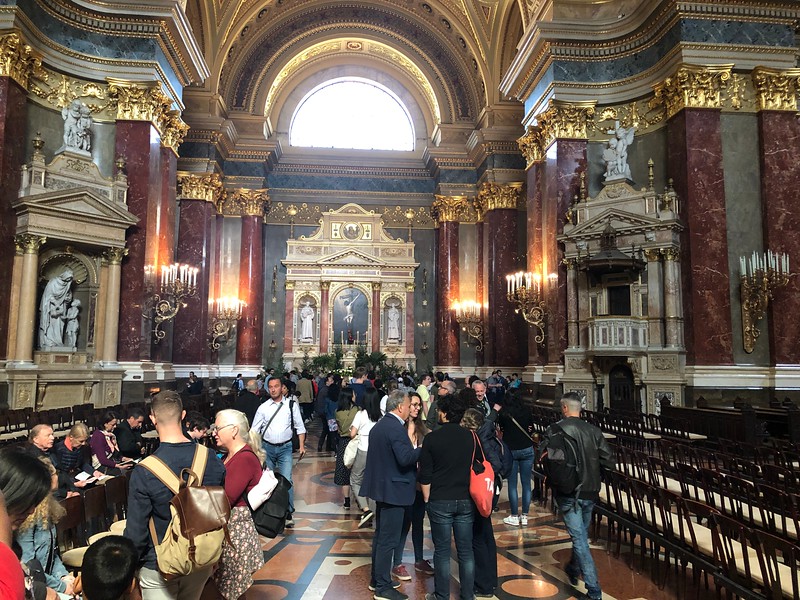
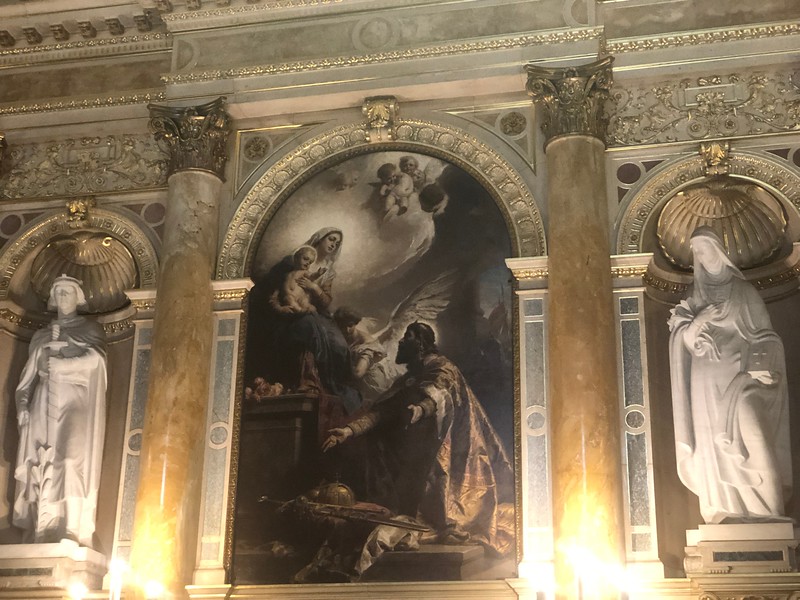
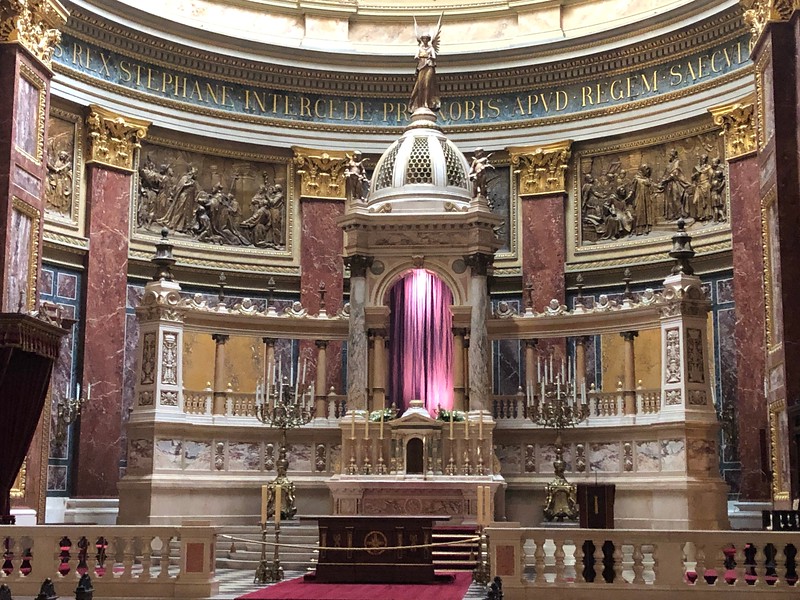
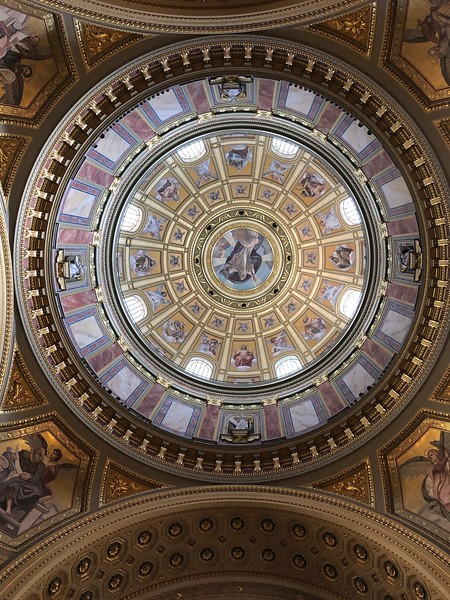
The cathedral also displays an actual relic of Saint Stephen himself. It’s in a glass and metal display case, and for about a Euro, you can light it up for two minutes to see it better.

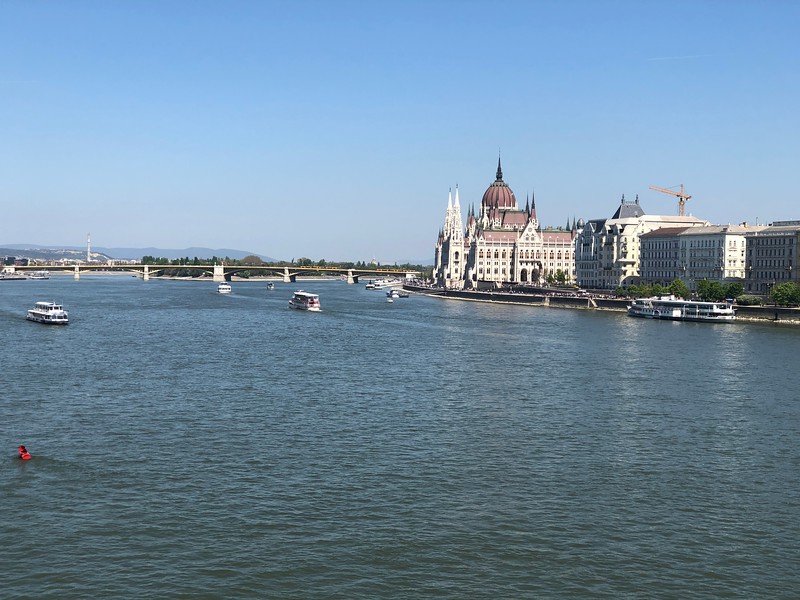
Onwards we went, making our way to the castle district, crossing the Danube and winding our way up the hillside.
While we toured the grounds, the main attraction we found was the old cave hospital. The entire area is filled with hot springs and caves, and the castle is directly over a cave system that, for centuries, was sort of a dumping ground, but on the even of war in 1940, the Hungarians thought to clean it out ad build a hospital inside, allowing the hill to serve as a bunker. We were not allowed to take photos but the tour basically takes you through the hospital, with mannequins and old equipment set up. It wasn’t until they end that it dawned on us that, technically, the Hungarians fought on the side of the Germans, arguably in an act of self-preservation, and switching sides once liberated by the allies.
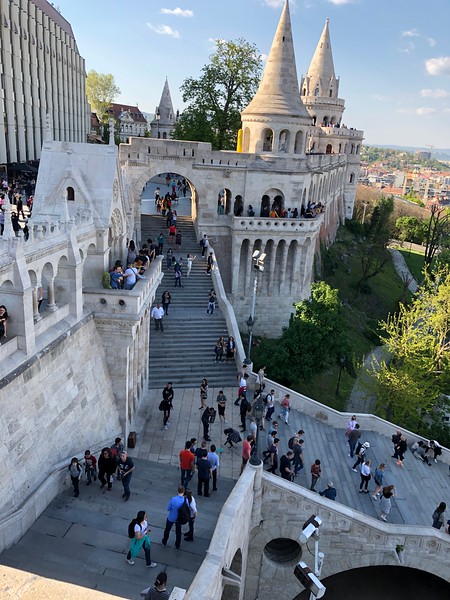
The neat thing for me about the bunker was that after the war, it was also a fallout bunker in the event of nuclear attack, meant to be a place the military could continue command operations from. It was still functioning as such in the time that I lived in Germany, at the end of the Cold War.
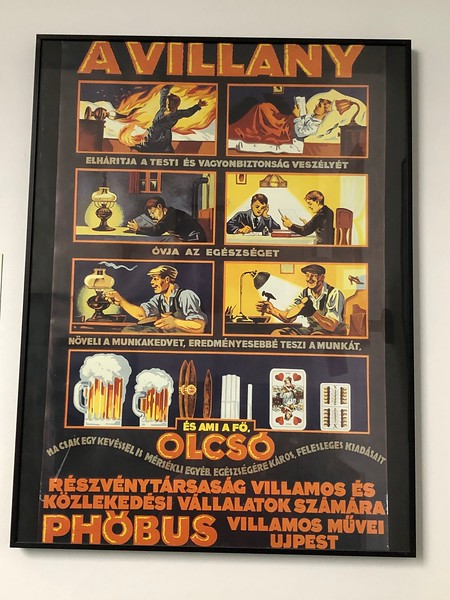
As we went back to the hotel, we made one more stop to see a place that had been closed when we left earlier: the electrical engineering museum! David’s father was an electrical engineer, and David and I are both geeky technology people. The museum is lightly run; A little old lady took our money and then pointed for us to go around the corner to enter; we went up some stairs and spent the better part of an hour looking at old electrical equipment and learning about how electricity was brought to Hungary.
At some point, the closest thing to a docent found us and, her not knowing English and us not knowing Hungarian, she still managed to impress us with some practical displays of electricity. We got the sense that this was where kids from schools were brought – and we loved it.
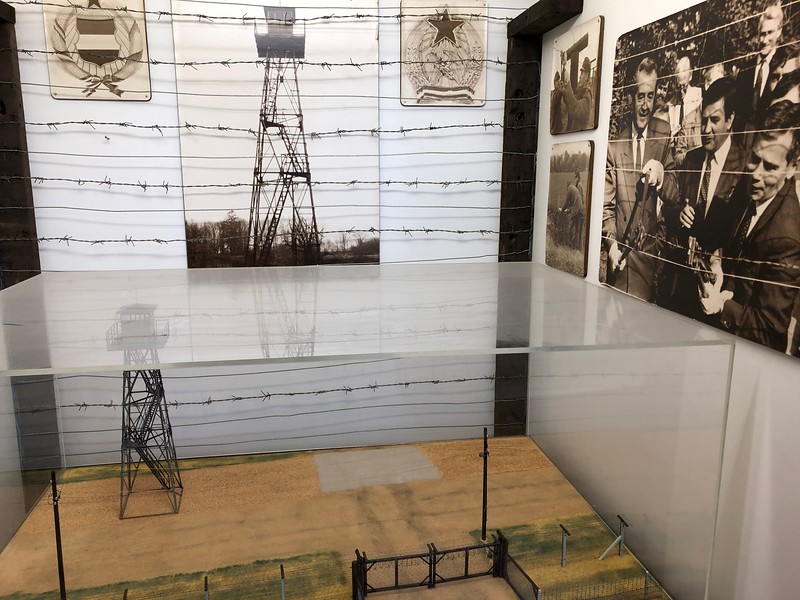
We had tarried too long, though. The museum closed, and we didn’t realize until we left that there was a lot we hadn’t seen. Essentially we never left the middle of the nineteenth century. Still, if you’re looking for non-touristy tourism in Budapest, give the museum a try.
The last touristy thing we did that night – and I have to say, just writing all this astonishes me at how much we squeezed in – was to attend a klezmer concert in the Jewish Quarter. A band set up in a small dedicated performance space in the back of a restaurant. We were the last two in, and got seats up in the balcony. The singer didn’t speak English, but would introduce songs and then one of the instrumentalists would explain the story behind the songs. Even not knowing Yiddish, the songs were beautiful to hear, exciting and melancholic in turns.
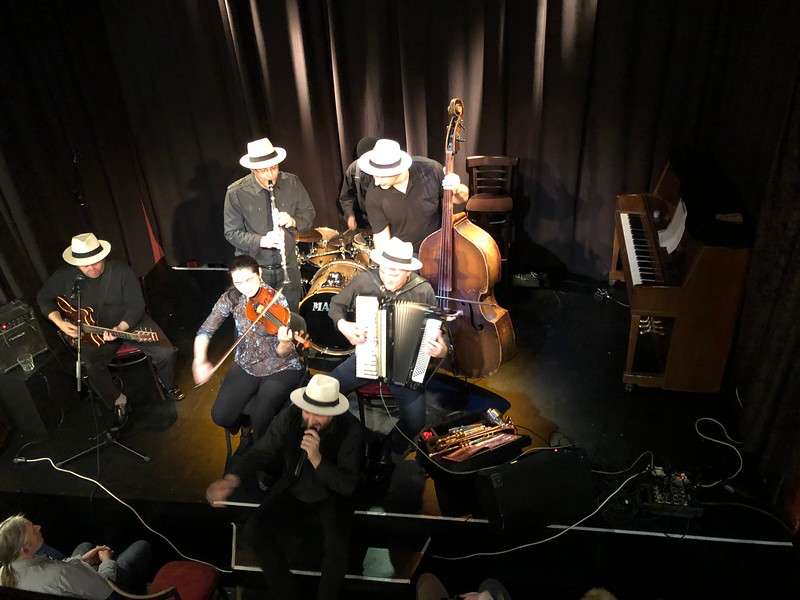
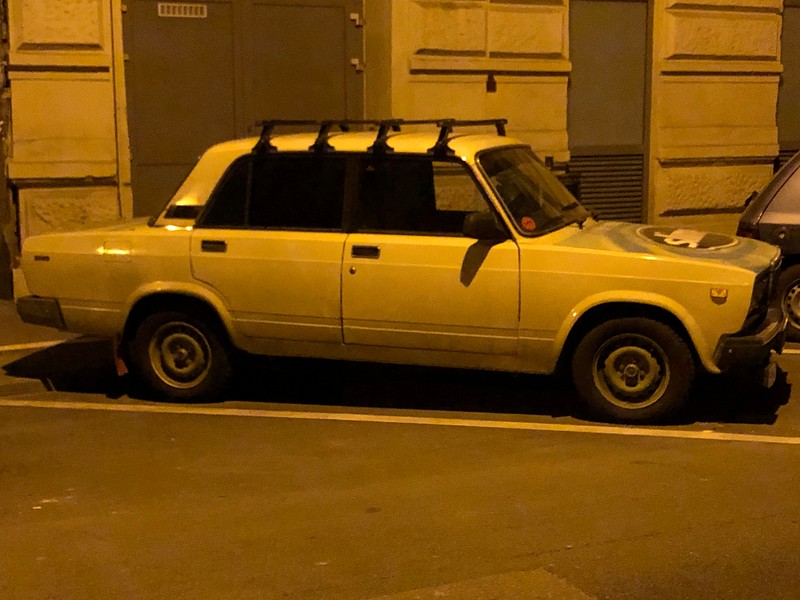
On the way home we spotted this Lada with extra racks. On closer inspection, it was a tire delivery or flat-fixing service – those racks are for tires, not kayaks!
Day 2
On our second day, we did two things that were a bit spread out from each other: we visited some old Roman ruins, and we attended one of the many bath complexes in Budapest.
The town of Aquincum was a Roman settlement built around a fort, and for a time was the capital of Pannonia Inferior, the province in which it was situated. We had to travel a bit far via metro train, and then walk a bit, and truth be told I was on the fence; who wants to go out of their way for some old ruins? I’m glad we did though.
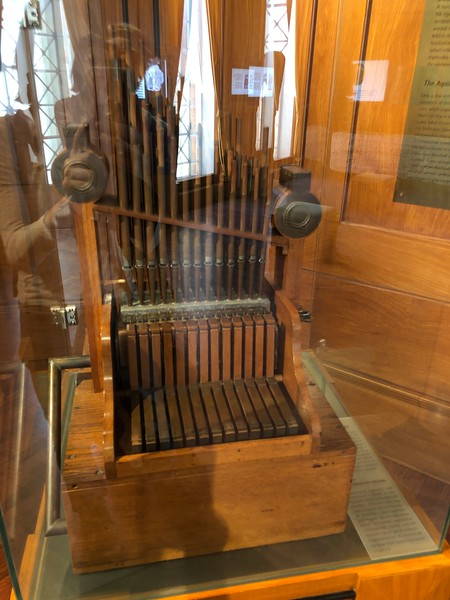
The site is a bit famous for what’s left of a water organ. The metal parts are on display, and a short video plays of a reconstruction. It’s a testament to humanity that something so complex could be engineered and built.
We also saw, in the visitor’s center, what we jokingly referred to as the “Roman Rand McNally” or “Roman AAA Map”. It was a long scroll showing all the roads in the Roman Empire, from the Gallic frontier to Palestine and beyond. The thing is, it’s a scroll, so everything is limited to the width of the scroll, distorted to be long and narrow.
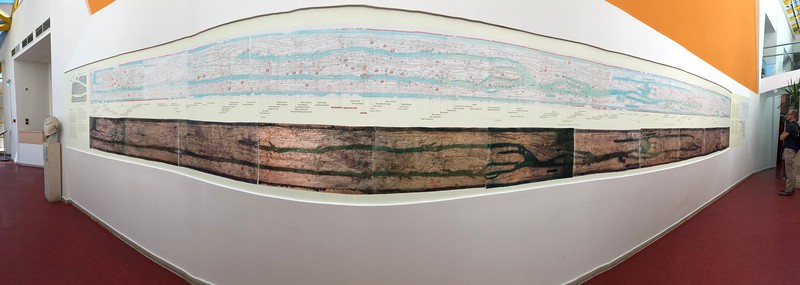
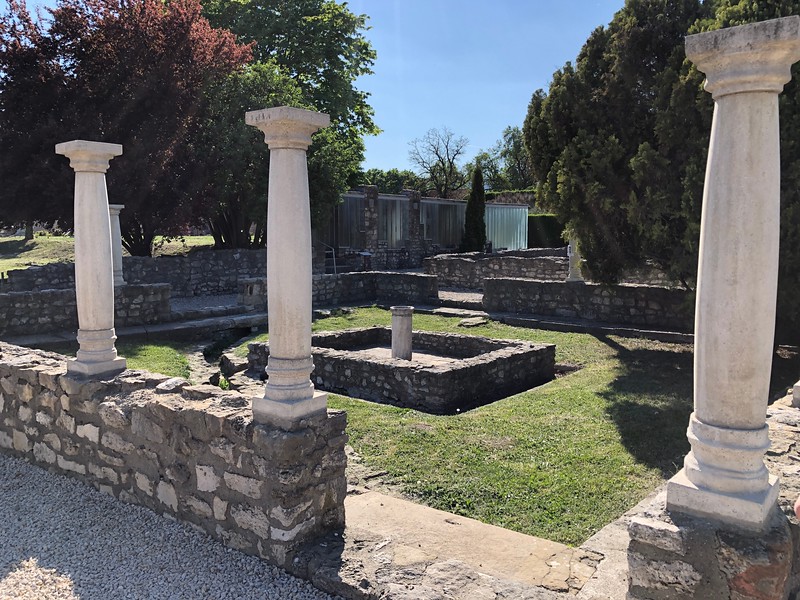
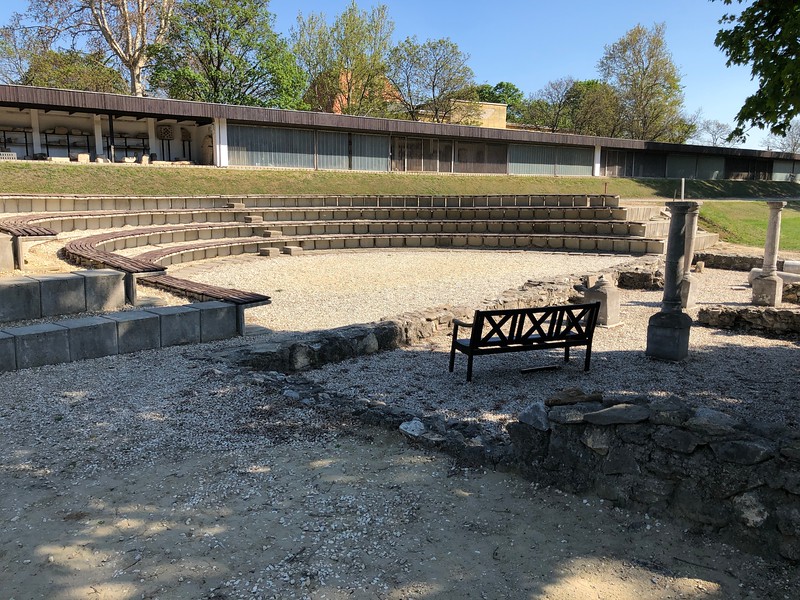
Situating where Damascus was relative to Jerusalem was a bit of a challenge. All the same, we imagined ourselves as ancient Romans, trying to figure out which roads to take to go on holiday in various cities. Touring the grounds, it wasn’t hard at all to imagine walls extending up to form the homes and workshops of Aquincum’s denizens.
Aquincum was also home to a local religious cult, one a bit of the usual Roman pantheon. I believe it was a Cult of Mithras, but I’m not certain. Aquincum has a reproduction temple built that includes some of the original structure.
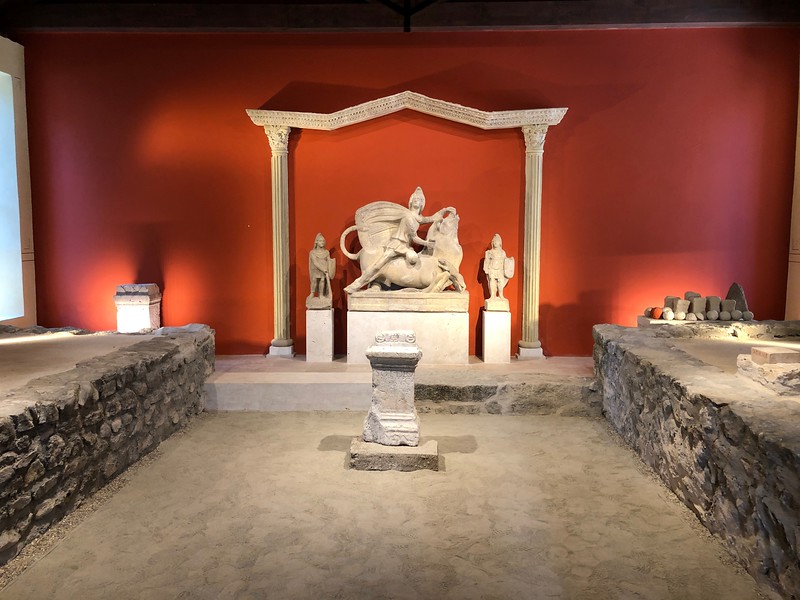
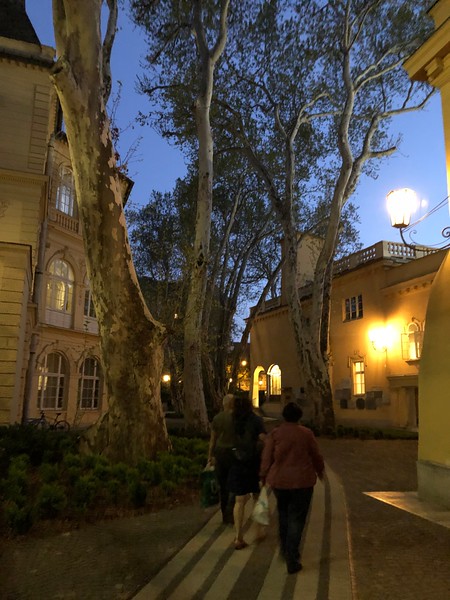
After that, we returned to Budapest proper and made our way to one of the city’s many bath complexes. Budapest’s geology is riddled with hot springs, and the city is known for its various public baths. There is a culture around baths, with rules about wearing bathing caps, sometimes required, sometimes not. I’d forgotten to bring mine, so I bought a cheap one, which allowed me to swim some laps in the outdoor cold pool. At one point a duck alighted in the pool, and I shared a laugh with the handful of other women, one of whom now had to contend with a duck in her path.
We tried the waterjet loop, the overhead showers, the hot bath, the warm bath, the cold plunge (well, I tried the cold plunge). It was grand, and I wish we’d had more time, or tried a different bathhouse. While the Romans had baths, the history of some of these goes back to periods when the Turks dominated, and if you look into the various bathhouses, there are some choices to make in what style of bathing you want to partake of.
Our last night, we went out for dinner. I was a little conflicted because I felt that getting goulash in Hungary was sort-of a must-do sort of thing, but also an on-the-nose move, and in any case there were many other options available. I did have Hungarian wine, which is pretty good – but also goulash.
As we walked around the city, we reflected on our days in central Europe, in the former Eastern bloc for the most part. We were in a part of the world that for centuries was dominated by the rule of a particular family, the Habsburg. Good Habsburgs, Bad Habsburgs, Habsburgs enforcing Catholicism, Habsburgs here, there, everywhere. Even after the fall of one empire (the Holy Roman Empire, which was neither holy nor Roman, and at times barely an empire), the Austro-Hungarian Empire that rose to replace it took another century for it to finally come to an end. Then, for about twenty years, these countries had a test of independence, of freedom to make bad choices and good, and then following the war Europe was again split into empires: East vs West, Communism vs Democracy.
Now, three decades on from the collapse of the Berlin Wall, where are these nations today? All are generally more prosperous, certainly the Czechs and Hungarians are; all are democracies, although Hungary has tilted very far to the right, and its elected leader, Viktor Orban, has led efforts to re-write the national constitution, and Hungary has been very strict and cruel in its treatment of muslim refugees. Austria continues to confront its fascist past, and the Czechs, well – they had a “velvet divorce” from Slovakia, two nations that were formerly one, amicably going their separate ways.
Free people will make their own decisions. But, where do those decisions lead them? Where do they want to go? What drives a nation – in the ethnic sense as well as the nation-state sense, to determine its policies for internal freedoms, to determine its policies on trade, on national defense?
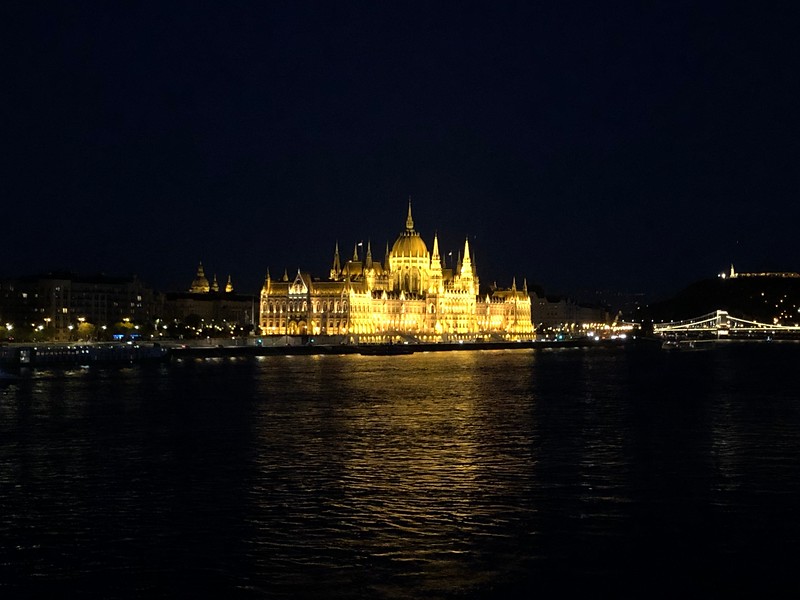
On Sunday, Easter Sunday as it happened, we checked out of our hotel and ordered a cab to take us to the airport, where we boarded a plan run by yet another former Warsaw Pact nation, the Polish national airline LOT. We boarded a Boeing 787 Dreamliner, a brand new plane on a direct route to JFK just opened up by LOT. The service was great, at check-in and on the plane; the food was good, and the airplane new and clean. If we needed any reminders that the Central and Eastern Europe of the past was, indeed, in the past, our return flight was a good one.
